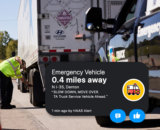Welcome to the newest post in our blog series, Darren’s Great Ideas! for Independent Operators.
How to Know Your Truckstop Customer
I always highlight the importance of knowing your customer and understanding what your customers want, but operators frequently ask me what that means.
They also want to know if it is going to be hard and where to start.
I always tell them that, no, it isn’t hard, but it takes some time and effort to do it correctly. As so many of our members remind me daily, operators do not know what they do not know. Unless you have been taught how to spacewalk, chances are that when given the opportunity, you will not do well at that activity.
So let’s walk through an example process of discovering who your customers are and what they want from you.
- Create an objective, such as finding your competitive advantage in the marketplace.
- Within the objective, define what you are looking to do, such as create differentiation in the market place.
- Questions you should be asking yourself include:
- What is your location known for?
- What types of products should your location carry?
- What will help grow your location’s sales?
- Where can your location be positioned in drivers’ minds?
Once you have these questions answered, you can begin your research, which is where the rubber meets the road. You can divide your research into three segments.
Segment 1 – Quantitative Research
Quantitative research is used to make decisions based on a majority. It can help you focus on how your organization markets its strengths. If need be, have an outside source assist you with developing the questions and interpreting the results. Try to limit the survey to 15 to 25 questions. Once you have your survey, you can place it on your internet site or your mobile app using a survey provider, such as Survey Monkey. You can create an incentive to take in-store, such as a coupon, discount or cents off for finishing survey to make it worthwhile. Try to capture a sample of 200 drivers.
Segment 2 – Qualitative One on One Interviews
I feel one-on-one interviews are critical. They are recommended to help find verbatim comments that can be used in marketing differences as well as help to uncover parts of the business that you and or your organization may not have considered. One-on-one interviews typically give the company a better understanding than focus groups because focus groups tend to have one decision maker that may or may not speak for the whole group. When doing interviews, try to get a sample of 20 drivers both company, leased and true independent operators. Incentive them to participate with an in-store coupon and/or buy lunch or dinner. For the interviews, use 20 to 25 questions and include those that can allow for both set and free-form answers.
Segment 3 – Secret Shopping
It is not only important to get the impression of drivers, but to shop your company’s location[s] and the competition. Secret shopping includes having people shop your locations as well as the competition and look for friendliness of staff, shower quality, product selection, merchandising, etc. You may be able to work with a small fleet and/or a regular local truck company, such as a dump truck service or landscaping service, to help facilitate survey results. Outside assistance can be very valuable in interpreting the results.
Once the results are interpreted, you can discuss campaign themes and methods on how to roll out the campaign. The discussions can include those organizations that you currently utilize or other organizations that you should consider as new partners. In addition, vendors that assist you with merchandise ideas, fuel programs and media placement should be part of the partnership you create to execute your objective.
/// Read more Darren's Great Ideas for Independent Operators posts here.
Subscribe to Updates
NATSO provides a breadth of information created to strengthen travel plazas’ ability to meet the needs of the travelling public in an age of disruption. This includes knowledge filled blog posts, articles and publications. If you would like to receive a digest of blog post and articles directly in your inbox, please provide your name, email and the frequency of the updates you want to receive the email digest.


